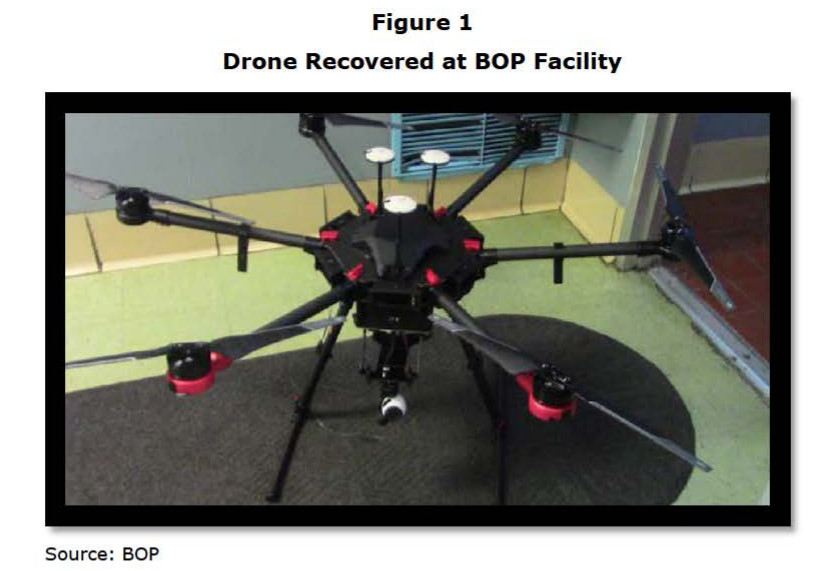Drones have been a problem for prisons for years now, where they’re often used to smuggle contraband behind bars. But could they also get inmates out of prison by airlifting them over the walls? That’s one worry expressed by federal prison officers in a new report on the topic from the Department of Justice (DOJ).
The report is essentially an overview of how federal prisons track and mitigate the threat posed by drones. Much of it is given over to complaints about the bureaucracy involved in reporting drone incidents, and the difficulty in identifying and implementing effective drone countermeasures. The overall finding is that drones are only going to become a greater problem for prisons in future, and that the government isn’t doing enough about it.
“Drones have been used to deliver contraband to inmates, but could also be used to […] facilitate escape attempts”
“We found that the BOP [Federal Bureau of Prisons] faces significant and growing challenges to protect its facilities from drone threat,” state the report’s authors. “Drones have been used to deliver contraband to inmates, but could also be used to surveil institutions, facilitate escape attempts, or transport explosives.”
Right now it seems drones are only really used for smuggling contraband. The report cites one incident in which a drone was recovered from a federal prison carrying a package containing “20 cell phones, 23 vials of injectable drugs, dozens of syringes, and multiple packages of tobacco, among other contraband items.” The BOP only began tracking drone incursions in 2018 and recorded 23 incidents that year. This increased to 57 incidents in 2019, but the report notes that this figure is likely an underestimate.
:no_upscale()/cdn.vox-cdn.com/uploads/chorus_asset/file/21884870/Screen_Shot_2020_09_16_at_1.03.09_PM.png)
In the future, though, federal prison officers are worried drones could be put to other, more nefarious purposes. Officers cited in the report were concerned that commercial drones could be armed with explosives and used to attack them (a tactic used by some terrorist groups like ISIS) and that future drones could be used to enable inmates to escape from prison. (An aside in the report first spotted by journalist Brad Heath on Twitter.)
“BOP officials told us that future devices may even have payload capabilities that could allow for the lifting of an adult out of a prison,” says the report. “Given trends in both the industry and observed incidents involving drones at prisons, the threat posed by drones to BOP facilities will likely increase as drone technology continues to advance.”
Although the idea of using a drone to airlift someone out of prison sounds fantastical, it’s not actually impossible. Some drones are certainly capable of lifting human beings, and a number of enthusiasts have made their own DIY aircraft that do exactly that.
Airlifting a human using a drone is possible, but not cheap or easy
However, these sorts of payload capabilities aren’t cheap or accessible. Part of the reason drones are being used to smuggle contraband is that the equipment can be bought for a few hundred dollars. Creating a drone capable of carrying a human being, though, would cost much more than that and require a great deal of technical expertise. The drone would also be noisy — the equivalent of using a small helicopter for an escape. Anyone planning a breakout is probably going to look to more conventional methods first.
Drone airlifts aside, the DOJ is still stepping up its countermeasures. The report says the DOJ and BOP are “in the early stages of researching and evaluating a multitude of technologies and solutions offering both affirmative use and counterdrone capabilities.” As of February 2020, the BOP has been granted $5.2 million by the federal government to purchase drone “detection and mitigation systems,” but it says it wants more.
However, the report is also skeptical about the effectiveness of these tools. It notes that “many vendors of counter-drone technologies offer unproven capabilities or results that may only be achievable in a controlled environment.”
